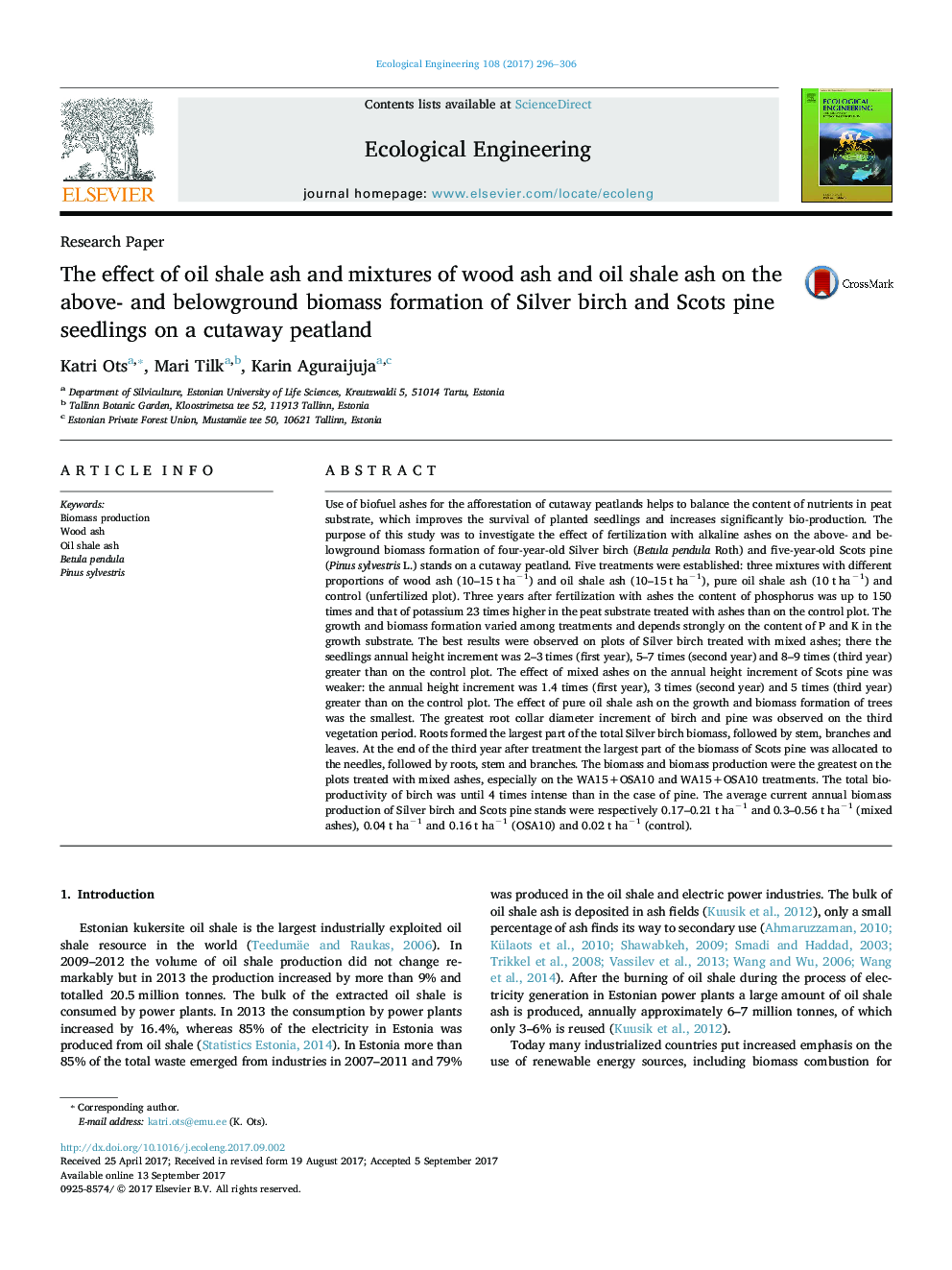| کد مقاله | کد نشریه | سال انتشار | مقاله انگلیسی | نسخه تمام متن |
|---|---|---|---|---|
| 5743544 | 1412314 | 2017 | 11 صفحه PDF | دانلود رایگان |
- Silver birch and Scots pine are suitable for afforestation of cutaway peatlands.
- Recycling of wood and oil shale ashes stimulates the biomass formation of trees.
- Use of ashes on the peatlands helps to balance the content of nutrients in peat.
- The biomass production was greatest on the mixture ash treated plots.
- The effect of pure oil shale ash on the growth of trees was smallest.
Use of biofuel ashes for the afforestation of cutaway peatlands helps to balance the content of nutrients in peat substrate, which improves the survival of planted seedlings and increases significantly bio-production. The purpose of this study was to investigate the effect of fertilization with alkaline ashes on the above- and belowground biomass formation of four-year-old Silver birch (Betula pendula Roth) and five-year-old Scots pine (Pinus sylvestris L.) stands on a cutaway peatland. Five treatments were established: three mixtures with different proportions of wood ash (10-15 t haâ1) and oil shale ash (10-15 t haâ1), pure oil shale ash (10 t haâ1) and control (unfertilized plot). Three years after fertilization with ashes the content of phosphorus was up to 150 times and that of potassium 23 times higher in the peat substrate treated with ashes than on the control plot. The growth and biomass formation varied among treatments and depends strongly on the content of P and K in the growth substrate. The best results were observed on plots of Silver birch treated with mixed ashes; there the seedlings annual height increment was 2-3 times (first year), 5-7 times (second year) and 8-9 times (third year) greater than on the control plot. The effect of mixed ashes on the annual height increment of Scots pine was weaker: the annual height increment was 1.4 times (first year), 3 times (second year) and 5 times (third year) greater than on the control plot. The effect of pure oil shale ash on the growth and biomass formation of trees was the smallest. The greatest root collar diameter increment of birch and pine was observed on the third vegetation period. Roots formed the largest part of the total Silver birch biomass, followed by stem, branches and leaves. At the end of the third year after treatment the largest part of the biomass of Scots pine was allocated to the needles, followed by roots, stem and branches. The biomass and biomass production were the greatest on the plots treated with mixed ashes, especially on the WA15+OSA10 and WA15+OSA10 treatments. The total bio-productivity of birch was until 4 times intense than in the case of pine. The average current annual biomass production of Silver birch and Scots pine stands were respectively 0.17-0.21 t haâ1 and 0.3-0.56 t haâ1 (mixed ashes), 0.04 t haâ1 and 0.16 t haâ1 (OSA10) and 0.02 t haâ1 (control).
Journal: Ecological Engineering - Volume 108, Part A, November 2017, Pages 296-306
